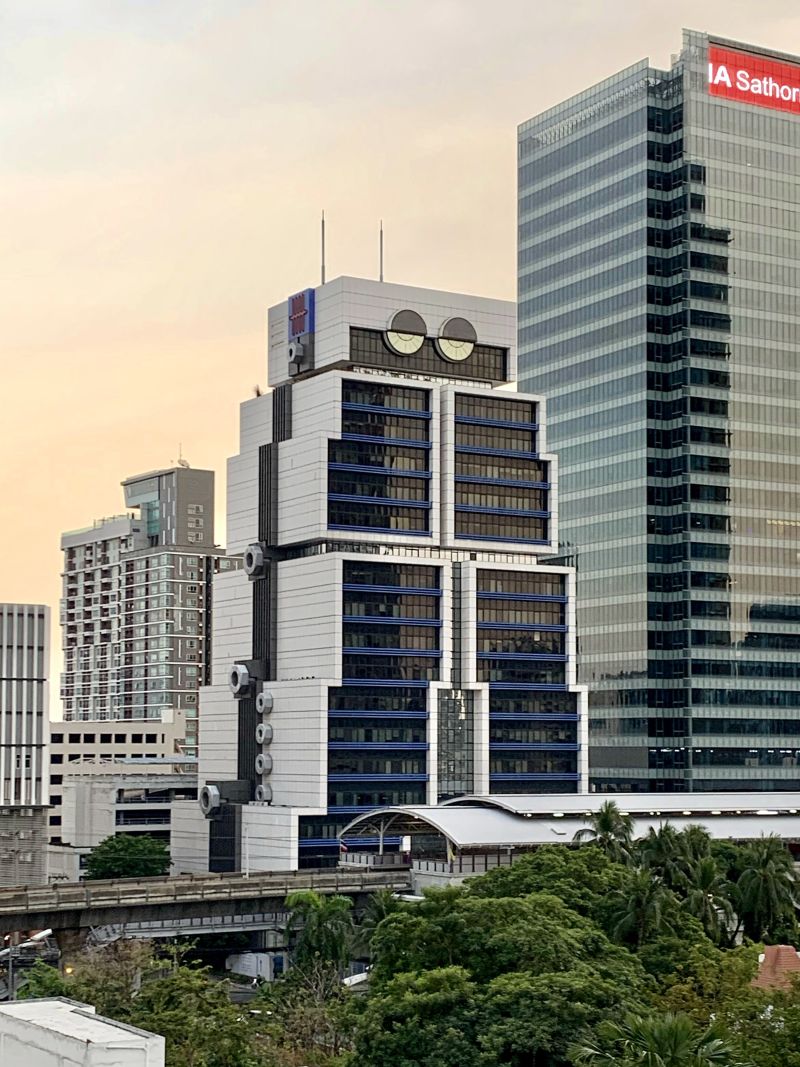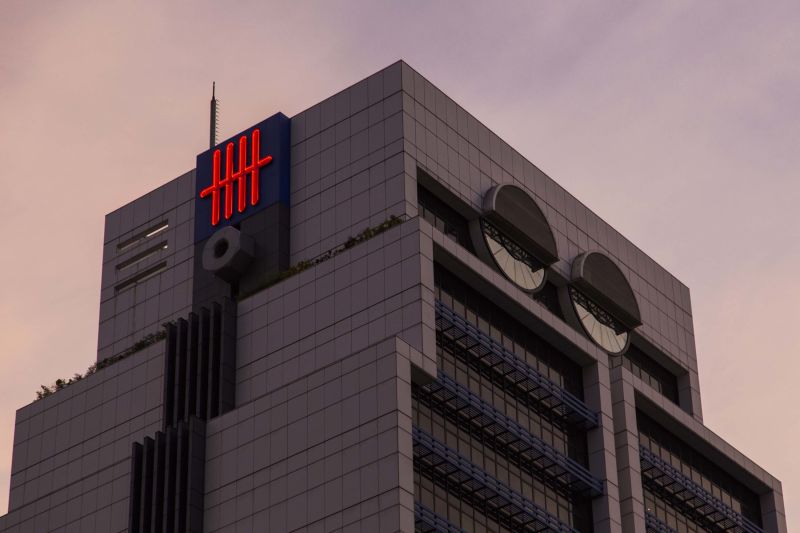Controversial Transformation: Concerns arise over renovation of Thailand's iconic Robot Building
Controversial renovations to Bangkok's iconic Robot Building have sparked outrage among campaigners and architects, including the 84-year-old designer Critics argue that the tower's unique design and historical significance have been compromised, raising concerns about the building losing its soul
The "Robot Building," a well-known landmark in downtown Bangkok, has undergone major renovations, leaving it almost unrecognizable except for its distinctive shape. The building's owners, UOB Thailand, a branch of United Overseas Bank from Singapore, state that the refurbishment aims to improve energy efficiency and provide a more employee-friendly environment. However, conservationists and architects, including the 84-year-old designer of the tower, who claims to have seen the plans for the new exterior, have expressed disappointment with the significant changes being made to this iconic example of Southeast Asian postmodern architecture.
Completed in 1986, the Robot Building was constructed to symbolize the advancements in the banking industry, which was embracing emerging computer technology during that period. Sumet Jumsai, the architect behind this innovative structure, drew inspiration from one of his child's toy robots. Regarded as a prominent figure in contemporary Thai architecture, Sumet Jumsai was recognized as a "national artist" by the government of Thailand.
In an email correspondence with CNN, Sumet, who is currently retired, expressed his distress over the "defacement" of his creation. He characterized the renovations as a "devastating statement" that reveals the "ignorance and arrogance of big corporations."
The Robot Building pictured in 2022, shortly before the tower's exterior was stripped as part of ongoing renovations.
In March, the architect expressed concern to UOB Thailand regarding the loss of the towers' "original iconic features," including its eyes. The architect urged the bank to reconsider their plans "before it is too late." UOB Thailand's response, shared with CNN by Sumet, acknowledged the building's significance as a landmark. However, they stated that the planned refurbishment would bring the building "into a new era while honoring its heritage."
The bank stated that it intends to preserve a replica of the original form of the building in a designated area of the lobby. Acquired by UOB Thailand in 2005, the tower was initially designed for the Bank of Asia. According to the firm, the renovations will primarily prioritize environmental sustainability and the well-being of the numerous employees expected to occupy the building upon its reopening in 2025.
The organization's revamp aims to decrease electricity usage by a minimum of 15%, achieved by installing a new glass exterior that minimizes the requirement for artificial lighting, consequently lowering associated carbon emissions.
Elevated design
With a towering height of 20 stories, the Robot Building showcases a unique architectural design where the floor size diminishes gradually as it ascends. This distinctive feature grants the structure its staggered and eye-catching form. Enhancing its whimsical charm, the building's upper floors are adorned with lid-shaped "eyes," functioning as windows for two luxurious executive suites. Additionally, playful antennas not only serve as communication devices but also double as lightning rods, while a series of sizeable metallic nuts embellish the building's exterior, further accentuating its toy-like appearance.
The Robot Building is one of the few landmarks that has managed to survive Bangkok's rapid urban development, which has caused many historical landmarks to disappear. Following the 1997 Asian financial crisis, Bangkok experienced a construction boom that completely transformed areas like Sathorn. Today, Bangkok is ranked as the 14th tallest city in the world, with 112 towers measuring 150 meters (492 feet) or higher, according to the Council on Tall Buildings and Urban Habitat (CTBUH).
The tower's exterior pictured in August, after renovations began.
Kocha Olarn/CNN
The Thai chapter of Docomomo International, a non-profit organization committed to safeguarding modern architecture, has included the Robot Building in its forthcoming compilation of the nation's top 20 remarkable structures.
In a public letter addressed to UOB Thailand in April, Pongkwan Lassus, the president of the preservation group, referred to the Robot Building as a significant symbol, marking the shift from late modernism to postmodernism. This architectural style is renowned for its embellished exteriors, ornamental elements, and the abandonment of the mid-century principle "form follows function."
Bangkok-based filmmaker Dana Blouin, currently working on an undisclosed documentary about the Robot Building, expressed that the tower has unfortunately "devoid of its essence," disregarding the pleas made by activists.
Tokyo's renowned Nakagin Capsule Tower faces the prospect of being dismantled.
"We have underestimated the significance of what we have lost," he conveyed to CNN through a video call.
Acknowledging that the tower may have been perceived as a mere "curiosity," Blouin emphasized that the original conception had an elevated and refined essence. He further expressed, "Although it maintained its element of enjoyment and playfulness, it also exuded enchanting beauty."
"When it was constructed, the building stood tall among its peers in the Sathorn district," he remarked. "However, in today's urban landscape, it pales in comparison to the towering glass and steel structures that surround it. Yet, this very contrast adds to its unique charm."
The building's lidded "eyes" served as windows to executive suites on the upper floors.
John S Lander/LightRocket/Getty Images
Shifting attitudes
The sentiments expressed by the filmmakers may not resonate with the majority of Bangkok residents. At present, a petition was initiated in April by various advocacy organizations, including Docomomo, which has received less than 1,700 signatures as of the current date.
Thailand's focus on conservation and legislation primarily revolves around protecting the country's historical legacy. Advocates and designers remain optimistic that while it may be too late for the preservation of the Robot Building, other significant contemporary architectural marvels can still be saved from a similar demise.
"In light of nearly twenty years of perseverance, we are now witnessing a transition in the government sector," states Pongkwan's letter addressed to UOB Thailand.
Blouin believes that it is necessary to have a broader cultural change in order to preserve other modern Bangkok landmarks. "The prioritization of what's new has resulted in the neglect of these iconic places," he expressed. "And that's regrettable."
CNN's Kocha Olarn also contributed to this report.









